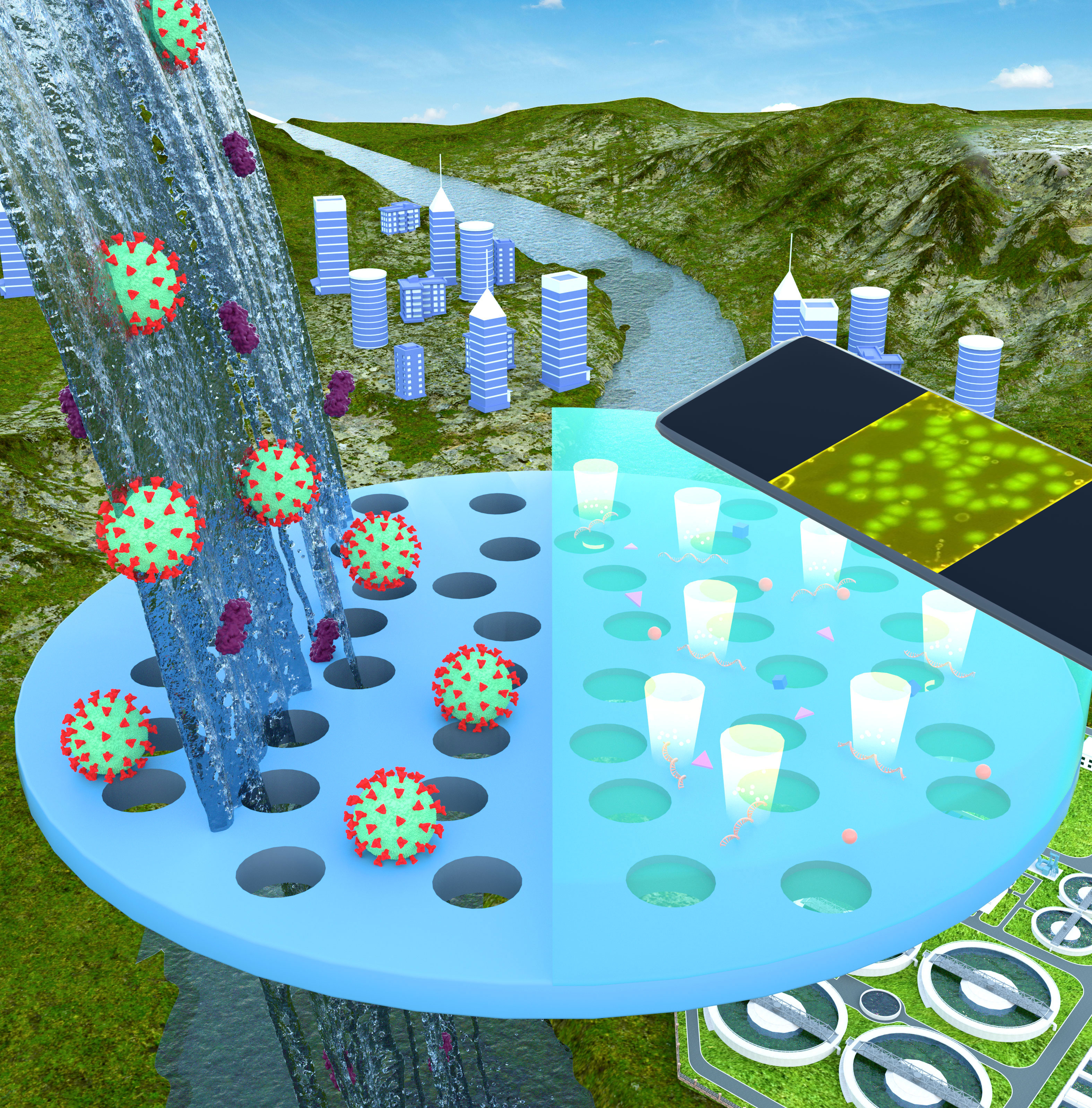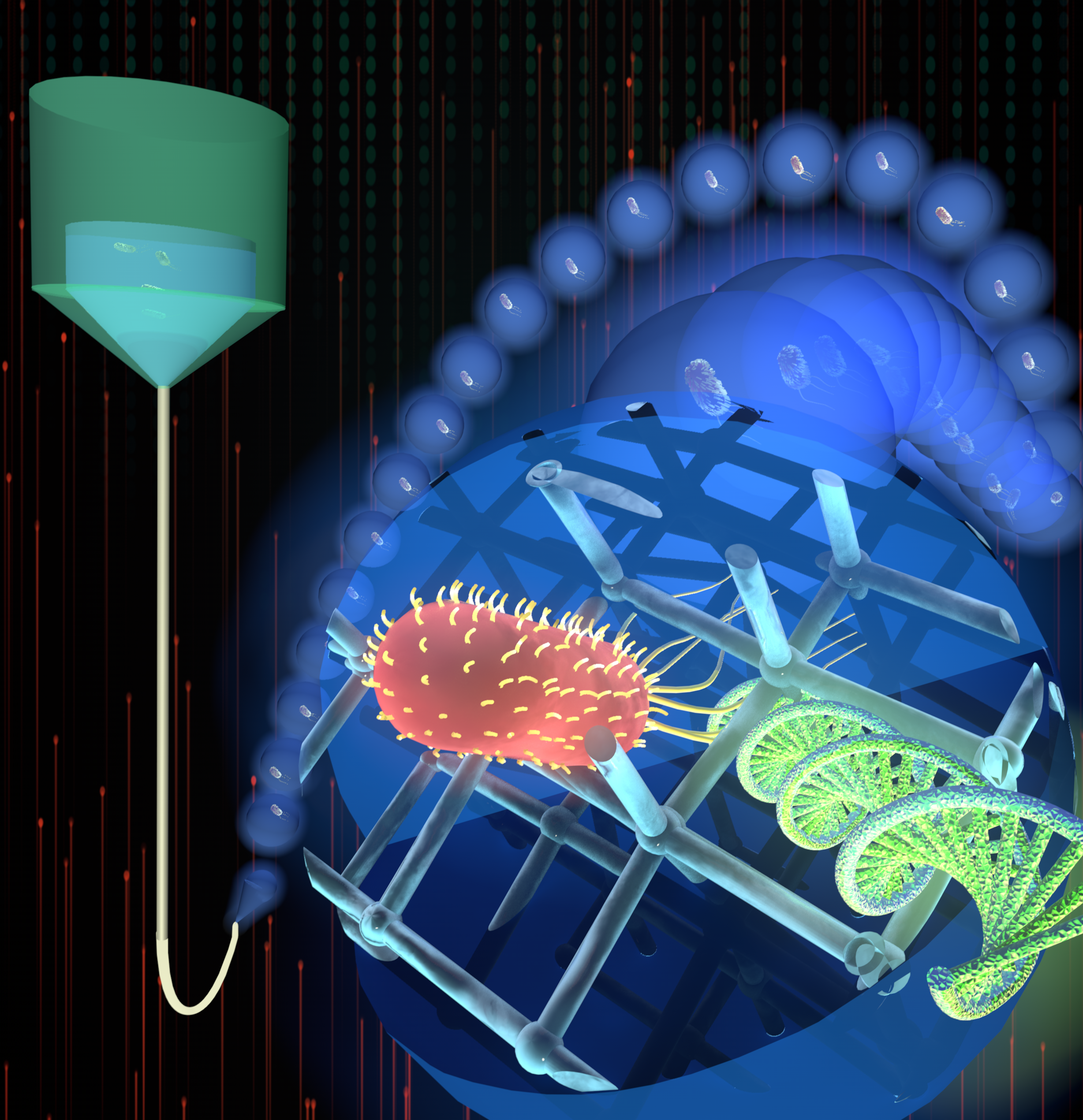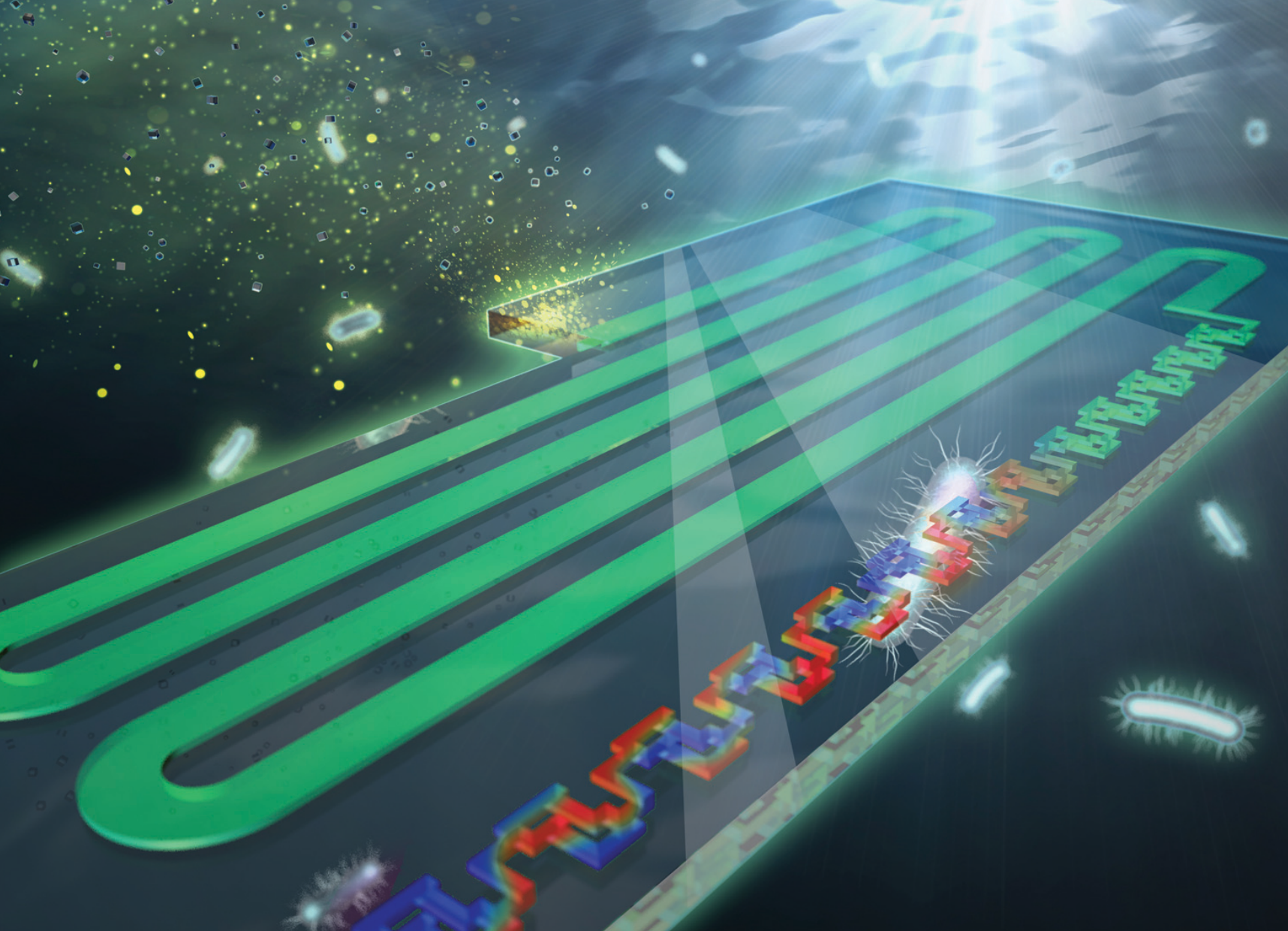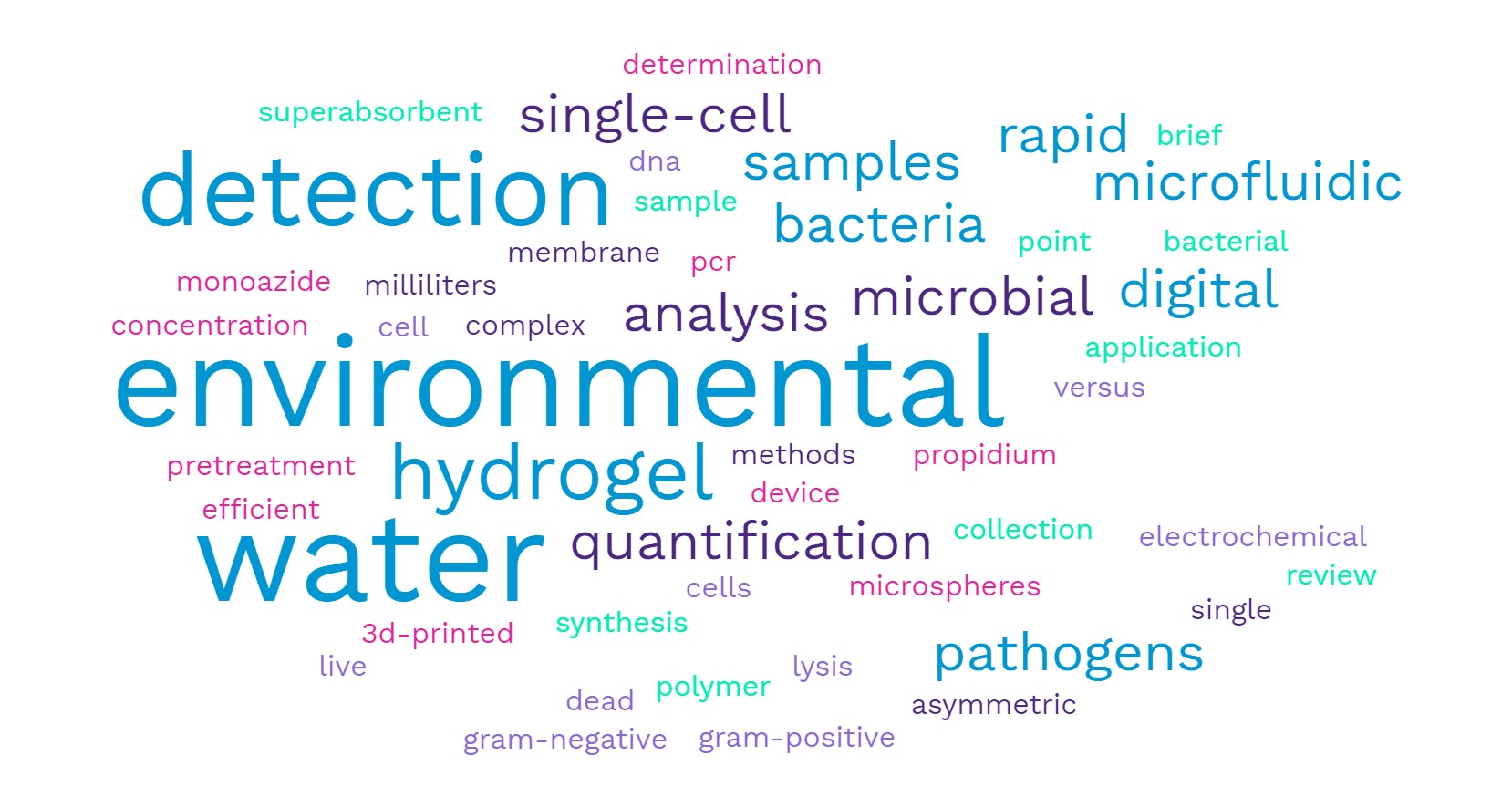Yanzhe Zhu
(she/her)Postdoc in Environmental Science and EngineeringCalifornia Institute of Technology
Striving to expand the toolkit for environmental microbiology

Postdoc in Environmental Science and EngineeringCalifornia Institute of Technology
Striving to expand the toolkit for environmental microbiology

Hello! My name is Yanzhe Zhu. I am currently a postdoc in the laboratory of Dr. Victoria Orphan at California Institute of Technology. My current research focuses on developing hydrogel-based platforms for enrichment of microbes from deepsea sediments. My journey as a researcher started out as a chemical engineering undergrad investigating the fate and transport of CeO2 nanoparticles in aqueous sysetems under the advisement of Dr. Young-Shin Jun. Expanding my scope of research to biological aspects of water safety, I then conducted PhD research with Dr. Michael R. Hoffmann, where I developed simulation-guided 3D microfluidic tools for rapid, sensitive, and affordable environmental pathogen detection and single cell analysis.
| Ph.D. in Environmental Science and Engineering | California Institute of Technology | 2015-2020 |
| B.S. in Chemical Engineering | Washington University in St. Louis | 2010-2014 |
On this page I'm sharing selected work from my previous research that focused on development of tools for detection and analysis of environmental waterborne pathogens in complex environmental matrices.

Soon after the COVID-19 outbreak in 2020, we started working on developing this membrane-based in-gel loop-mediated isothermal amplification (mgLAMP) platform for integrated SARS-CoV-2 virus quantification from environmental water samples, which is critical for rapid risk assessment and for early detection of variant outbreaks. We employed polyethylene glycol (PEG) hydrogel for virtual microfluidic RT-LAMP reaction in combination with track-etched polycarbonate membrane for virus capture enables absolute quantification of SARS-CoV-2 from 1 to 100 mL of a water sample within an hour. In addition, a 3D-printed portable device is developed to integrate the heated incubation and fluorescence illumination for the simultaneous analysis of nine mgLAMP assays. Smartphone-based imaging and machine learning-based image processing are used for interpretation of results.

While working with wateborne pathogen detection, I was intrigued by how the microbes could be clonal but heterogenous, e.g. antibiotic heteroresistance, so I worked on platform development that could probe the underlying molecular mechanisms in the dynamically changing heterogeneous cells. The platform utilizes polyethylene glycol hydrogel(PEG) that crosslinks through a thiol-Michael addition, which is biocompatible, fast, and spontaneous. In order to generate uniform nanoliter-sized hydrogel beads (Gelbeads), we developed a convenient and disposable device made of needles and microcentrifuge tubes, and established Gelbead-based single cell viability and molecular detection assays. Gelbeads were observed to provide enhanced thermal stability and uncompromised efficiency for digital PCR and digital LAMP. Reagent exchange for in situ PCR following viability phenotypic analyses was demonstrated to connect phenotypic assay to molecular detection to establish single cell genotype-phenotype correlations.
See how Needle-in-a-Tube(NeaT) droplet generation works on YouTube.

We have designed a microfluidic chip for live/dead cell differentiation with propidium monoazide pretreatment. The chip involves computer-aided design of microfluidic structures, and was prototyped by 3D printing, On-chip live/dead cell differentiation was successfully demonstrated for lab and environmental samples acquired on campus from our favorite turtle pond. The design can potentially be integrated into a microfluidic microbial monitoring system and advance the accuracy of water risk assessment.
This work featured as inside cover of issue and was nominated for Best Papers from 2018 in the Environmental Science family of journals.

Yanzhe Zhu, Xunyi Wu, Alan Gu, Leopold Dobelle, Clément A. Cid, Jing Li, and Michael R. Hoffmann. (2021) “Membrane-based in-gel Loop-Mediated Isothermal Amplification (mgLAMP) System for SARS-CoV-2 Quantification in Environmental Waters”. Environmental Science & Technology: 56, 2, 862–873.(Selected as the Non-PCR winner in Rapid Wastewater SARS-CoV-2 Testing Challenge held by Water Environmental Foundation) Link
Alan Gu*, Yanzhe Zhu*, Jing Li, and Michael R. Hoffmann. (2021) “Speech-generated aerosol settling time and viral viability predict COVID-19 transmission”. Environmental Science: Atmospheres, 2, 34-35. Link
Yanzhe Zhu, Jing Li, Xingyu Lin, Xiao Huang, and Michael R. Hoffmann. (2021) “Single-cell phenotypic analysis and digital molecular detection linkable by a hydrogel bead-based platform”. ACS Applied Bio Materials, 4, 3, 2664-2674. Link
Chelsea W. Neil, Xuanhao Wu, Doyoon Kim, Haesung Jung, Yanzhe Zhu, Jessica R. Ray, and Young-Shin Jun. (2021) "Arsenite oxyanions affect CeO2 nanoparticle dissolution and colloidal stability." Environmental Science: Nano, 8, 233-244. Link
Jing Li, Yanzhe Zhu, Xunyi Wu, and Michael R. Hoffmann. (2020) “Rapid detection methods for bacterial pathogens in ambient waters at the point-of-sample collection: A brief review.” Clinical Infectious Diseases 71, no. Supplement_2: S84-S90. Link
Xunyi Wu, Xiao Huang, Yanzhe Zhu, Jing Li, Michael R. Hoffmann. (2020) “Synthesis and application of superabsorbent polymer microspheres for the concentration and quantification of microbial pathogens in ambient water.” Separation and Purification Technology, 116540. Link
Siwen Wang, Yanzhe Zhu, Yang Yang, Jing Li, and Michael R. Hoffmann. (2020) “Electrochemical cell lysis of gram-positive and gram-negative bacteria: DNA extraction from environmental water samples.” Electrochimica Acta, 135864. Link
Xingyu Lin, Xiao Huang, Yanzhe Zhu, Katharina Urmann, Xing Xie, and Michael R. Hoffmann. (2018) "Asymmetric membrane for digital detection of single bacteria in milliliters of complex water samples." ACS nano. 12, no. 10: 10281-10290. Link
Yanzhe Zhu, Xiao Huang, Xing Xie, Janina Bahnemann, Xingyu Lin, Xunyi Wu, Siwen Wang, and Michael R. Hoffmann. (2018) “Propidium monoazide pretreatment on a 3D-printed microfluidic device for efficient PCR determination of ‘live versus dead’ microbial cells”. Environmental Science: Water Research & Technology 4(7): 956-963.(Featured as the inside cover and nominated for the Best Papers from Environmental Science family of journals in 2018) Link
Andrew J. Surface, Fei Wang, Yanzhe Zhu, Sophia E. Hayes, Daniel E. Giammar, and Mark S. Conradi. (2015) “Determining pH at elevated pressure and temperature using in situ 13C NMR.” Environmental Science & Technology. 49, no. 3: 1631-1638. Link
California Institute of Technology
1200 E California Blvd
MC 131-24
Pasadena, CA 91125
310 North Mudd
+1-314-210-4418